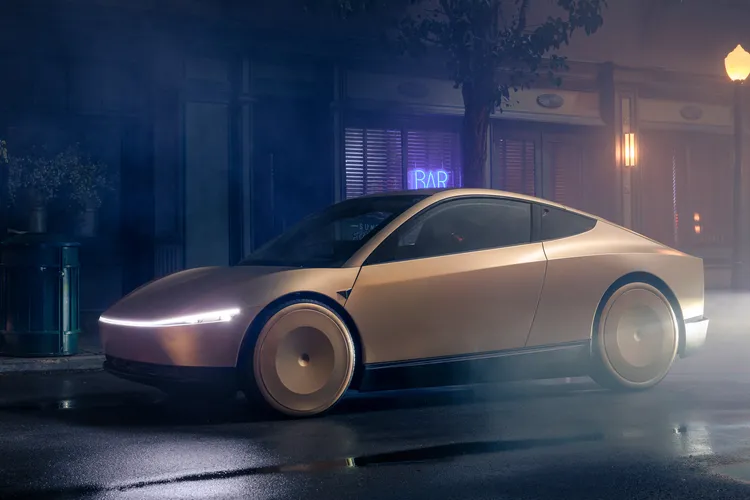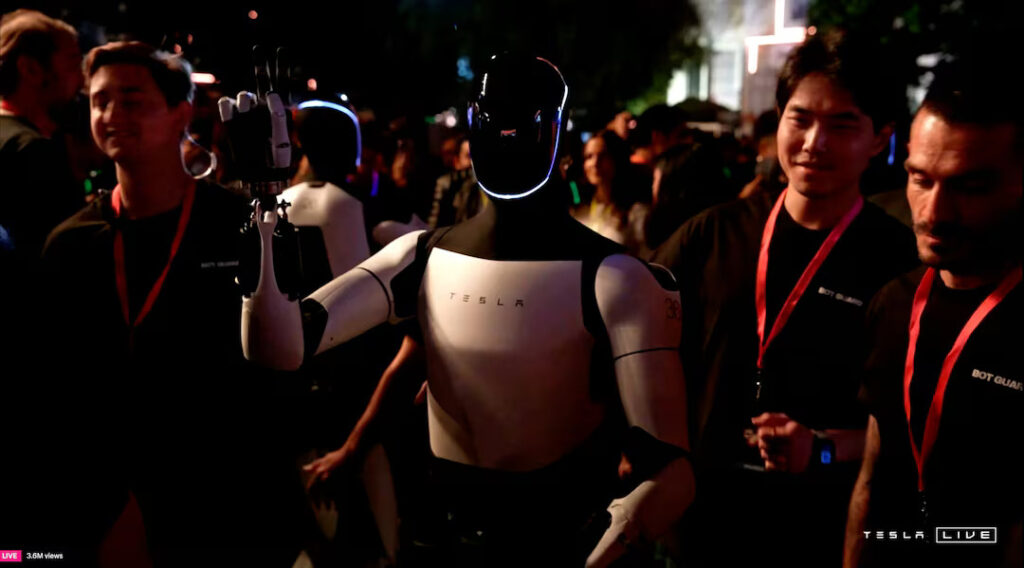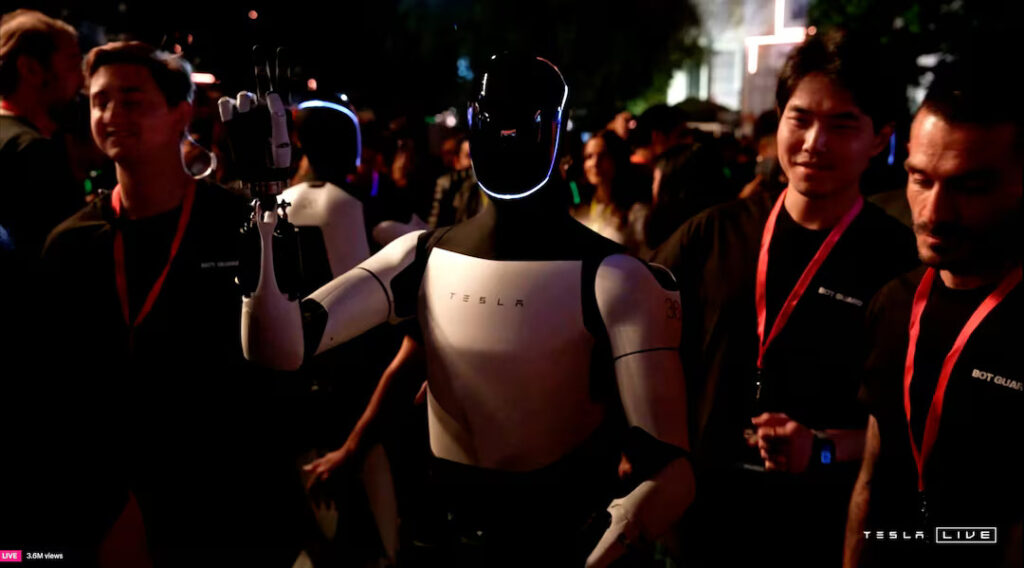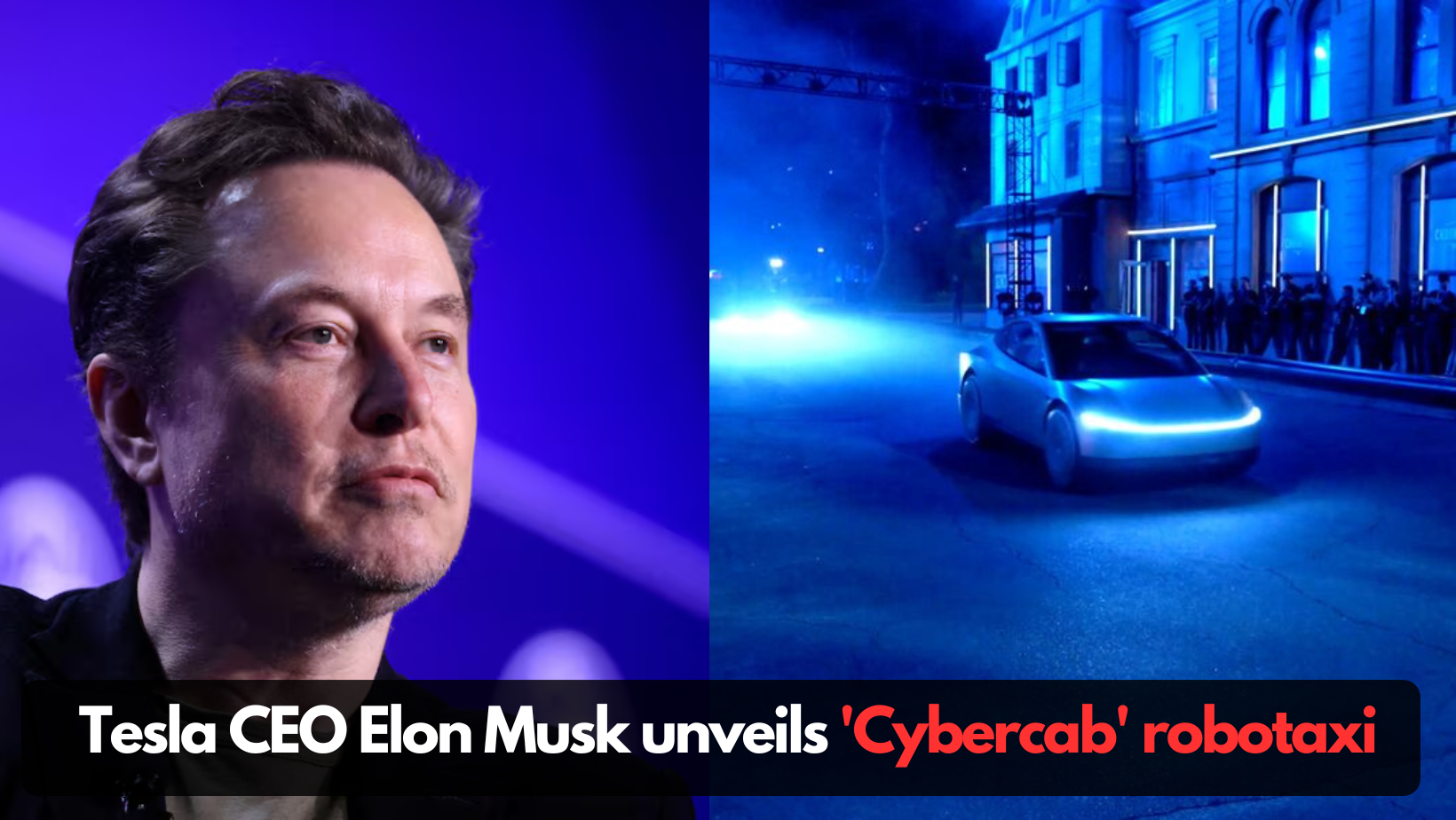
In a groundbreaking reveal at Tesla’s “We, Robot” event in Burbank, California, Elon Musk unveiled the highly anticipated Tesla Cybercab, a fully autonomous robotaxi expected to hit the market by 2027 for under $30,000. The event, held at Warner Bros. Studios, showcased Tesla’s ambitious leap into the future of self-driving technology, where human-like robots served drinks and danced to Daft Punk’s “Robot Rock.”
Tesla Cybercab: Revolutionizing Autonomous Driving
Musk arrived in the Tesla Cybercab, an all-electric vehicle designed to be fully autonomous, with no steering wheel or pedals. This futuristic robotaxi, with inductive charging capabilities (no plugs), is set to make waves in the auto industry. Musk stated that the vehicle would cost below $30,000 and predicted production to start by 2026, but quickly added, “before 2027,” acknowledging his tendency to be overly optimistic with timelines.
Tesla also aims to introduce autonomous driving to its existing Model 3 and Model Y vehicles, starting in California and Texas as early as next year. This move will allow current Tesla owners to experience unsupervised self-driving, pending regulatory approval.
Affordable, High-Tech, and Game-Changing
Musk’s vision for the Cybercab goes beyond personal use. He suggested owners could monetize their autonomous vehicles by offering ride-share services, competing with companies like Uber. In his words, it’s like becoming a “shepherd with a flock of cars,” opening up exciting opportunities for passive income.
Musk emphasized how Tesla’s advanced AI and real-time driving data—collected from millions of vehicles—will make these autonomous cars significantly safer than human drivers. “It doesn’t get tired, it doesn’t text. It’ll be 10, 20, 30 times safer than a human,” he said.
Also read: Tesla Robotaxi Cybercab Review: Design, Price, Features, and More
The Robovan and Tesla’s Humanoid Robots

The Tesla Robovan, an autonomous van capable of carrying up to 20 passengers or goods, was also announced. Although Musk didn’t provide specifics on pricing or availability, the Robovan is expected to serve a wide range of commercial purposes, including mass transport and logistics.
In addition to the Cybercab and Robovan, the event featured a fleet of Optimus robots, Tesla’s humanoid creations designed to assist with various tasks. These robots mingled with the crowd, serving drinks and entertaining attendees. Musk hinted that, at scale, each Optimus robot could cost as little as $30,000, adding another layer to Tesla’s vision of a fully automated future.
Tesla’s Legal Challenges Amid Ambitious Tech Push
The unveiling of Tesla’s advancements in autonomous driving comes at a critical time. The company is currently facing a class-action lawsuit from Tesla owners in the U.S. who were promised full self-driving features that have yet to materialize. Additionally, Tesla was forced to recall certain vehicles equipped with full self-driving software last year due to safety concerns, though these issues were resolved via a software update.
Despite these challenges, Musk remains confident in Tesla’s ability to lead the autonomous driving revolution. “With autonomy, you get your time back. It’ll save lives—many lives—and prevent injuries,” Musk stated. He envisions a future where parking lots are replaced by parks, and people can relax, watch movies, or sleep while being safely transported in a Tesla Cybercab.
What’s Next for Tesla and Autonomous Driving?

Musk’s bold predictions about autonomous driving underscore Tesla’s leadership in the electric vehicle space. The Tesla Cybercab, priced affordably and designed with cutting-edge technology, is poised to disrupt the ride-sharing and transportation industries. By offering a vehicle with autonomous capabilities and no need for human intervention, Tesla aims to redefine how we move, live, and work in the near future.
While challenges remain, particularly with regulatory approvals and safety concerns, Tesla’s Cybercab could become a game-changer for both individual users and commercial fleets. The future Musk envisions—where robotaxis replace traditional vehicles and humanoid robots assist with daily tasks—is rapidly approaching.
Conclusion: The Future of Transportation is Here
The unveiling of the Tesla Cybercab marks a major milestone in the development of autonomous driving technology. With a projected price tag under $30,000 and production set before 2027, this fully autonomous robotaxi could revolutionize personal transportation, offering a safer, more convenient way to travel. Paired with Tesla’s continued advancements in AI and robotics, the company is set to lead the charge toward a more automated, tech-driven future.
If you’re excited about what Tesla has in store, the future looks “glorious” indeed. Keep an eye on the Tesla Cybercab as it edges closer to reality.
